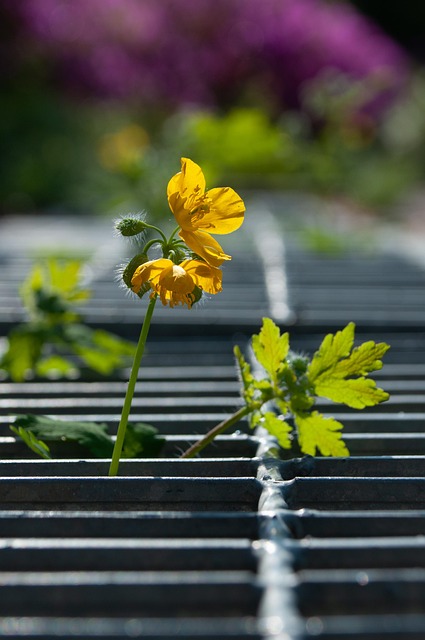Kratom, a natural herb native to Southeast Asia (Mitragyna speciosa), is recognized for treating opioid use disorders. Utah residents can now legally home-grow high-quality kratom with dedicated local cultivators. Growing your own kratom offers control over quality and cultivation methods, aiding in managing cravings. However, it's not a cure; proper growing requires careful planning, adherence to laws, suitable soil, optimal conditions, and consistent care. Integrating locally grown kratom into Utah's addiction treatment plans presents a personalized, promising approach with enhanced effectiveness when supervised professionally. Growing one's own kratom under licensing offers control over cultivation and quality for sustainable recovery.
Kratom, a natural herb with proven addiction-fighting properties, is gaining traction as an alternative treatment for those seeking recovery. For Utah residents looking to harness its potential, growing your own Kratom offers a sustainable and personalized solution. This guide explores the benefits of integrating Kratom into addiction treatment plans, providing insights on best practices and how to cultivate this powerful herb at home. Learn how to grow kratom in Utah and unlock its therapeutic capabilities for a successful recovery journey.
- Understanding Kratom: A Natural Herb with Addiction-Fighting Properties
- Growing Your Own Kratom: A Guide for Utah Residents
- Integrating Kratom into Addiction Treatment Plans: Benefits and Best Practices
Understanding Kratom: A Natural Herb with Addiction-Fighting Properties

Kratom, scientifically known as Mitragyna speciosa, is a natural herb that has gained significant attention in the realm of addiction treatment. Native to Southeast Asia, this plant has been used for centuries by local communities for its various medicinal properties. In recent years, kratom has emerged as a promising tool in helping individuals overcome opioid and other substance use disorders. Its active compounds interact with opioid receptors in the brain, providing relief from withdrawal symptoms and cravings without inducing addiction or tolergenicity, making it a game-changer for those seeking recovery.
Cultivating kratom is now possible even for folks in regions like Utah, where dedicated growers are producing high-quality plants. Growing kratom at home offers accessibility to this natural herb, allowing individuals to take control of their treatment journey. With the right knowledge and care, one can harvest and process the leaves to create various forms suitable for consumption, ensuring a consistent supply for those relying on it as part of their addiction recovery plan.
Growing Your Own Kratom: A Guide for Utah Residents

Utah residents interested in growing their own kratom for addiction treatment and recovery have a few options to consider. While it’s important to note that kratom is not a cure or approved treatment for addiction, some find it helps manage cravings and symptoms during withdrawal. Growing your own provides control over the plant’s origins, quality, and cultivation methods, ensuring purity and consistency.
Starting a kratom garden requires careful planning and adherence to local laws. In Utah, kratom plants are legal to grow at home, but it’s crucial to familiarize yourself with state regulations. Begin by selecting a suitable variety of Mitragyna speciosa (kratom plant) that aligns with your preferences and needs. Choose healthy seeds or cuttings from reputable sources. Next, prepare a well-draining soil mix in containers or outdoor beds. Kratom thrives in warm, humid conditions, so consider using grow lights or setting up an indoor environment that mimics these conditions. Regular watering, feeding, and monitoring for pests and diseases will ensure your kratom plants flourish.
Integrating Kratom into Addiction Treatment Plans: Benefits and Best Practices

Integrating Kratom into addiction treatment plans offers a promising approach for those seeking recovery, especially with the right growth and sourcing practices. In Utah, where kratom cultivation is thriving, access to high-quality, locally grown kratom can be a significant advantage in treating substance use disorders. This natural herb has gained attention for its potential to help manage cravings and reduce withdrawal symptoms, acting as an aid in breaking free from addictive behaviors.
Best practices involve tailoring kratom dosages under professional supervision, ensuring safety and effectiveness. Growing your own kratom (with proper licensing and regulations) allows individuals to gain control over the plant’s cultivation, potency, and quality, addressing potential concerns about contaminants or misidentification. This personalized approach can enhance overall treatment outcomes, offering a sustainable alternative for those looking to overcome addiction and embrace a healthier lifestyle.
Kratom holds promise as a natural alternative for addiction treatment, offering a safe and effective way to manage withdrawal symptoms and support recovery. For Utah residents looking to integrate this herb into their healing journey, growing your own kratom provides a sustainable and cost-effective option. By following the comprehensive guide on how to grow kratom in Utah, individuals can take control of their health and access high-quality kratom. Combining this herbal remedy with professional support and best practices for integration into addiction treatment plans can lead to more successful long-term recovery outcomes.














